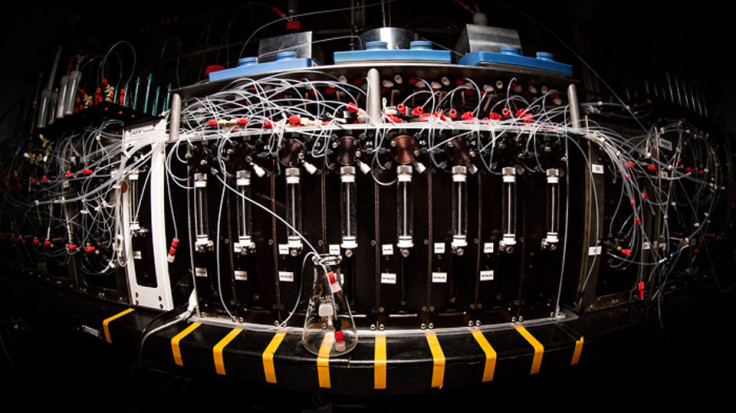Chemistry revolution: 3D printer developed that can synthesise molecules from scratch

Scientists from the University of Illinois at Urbana-Champaign have built a 3D printer that is able to synthesise small molecules from scratch, which could potentially revolutionise chemical and biological sciences.
Small molecules are naturally-produced organic compounds with a low molecular weight that can help to regulate a biological process. Most modern drugs are small molecules, and many technologies rely on small molecules, such as LEDs and solar cells.
However the process to synthesise small molecules is time-consuming and has to be highly customised for each application, so researching and creating new drugs currently takes many years even for highly-trained chemists and a lot of trial and error.
Also, let's say that a group of researchers know of a rare chemical that has unique medical properties, such as ratanhine, which comes from a little known Peruvian flower. The researchers would love to test the chemical as it has great anti-fungal properties, but it's difficult and expensive to get hold of.
Well, what if there was a machine that would let you print out the chemical compound you wanted, just by using a mixture of some base chemicals, like building blocks being snapped together? That's what Professor Martin Burke and his team of researchers at the University of Illinois at Urbana-Champaign's Howard Hughes Medical Institute have been working on for several years.
Their research, entitled "Synthesis of many different types of organic small molecules using one automated process" is published in the journal Science.
A 3D printer that prints exact chemical compounds
"A lot of great medicines have not been discovered yet because of this synthesis bottleneck," said Burke.
"The vision is that anybody could go to a website, pick the building blocks they want, instruct their assembly through the web, and the small molecules would get synthesised and shipped. We're not there yet, but we now have an actionable roadmap toward on-demand small-molecule synthesis for non-specialists."
Burke and his team have analysed the chemical structures of thousands of natural products in order to explore the potential of using small molecules to treat disease, as plants, animals and microbes all create small molecules with protein-like functions.
The researchers believe that if small molecules could be printed out in the lab with specific chemical modifications to suit specific molecules in the body, these molecules could be trained to mimic the function of any missing proteins to restore a patient's health.
"Doing real atomistic modifications to transform nature's starting points into actual medicines is really, really challenging. The slow step in most cases in the synthesis. As a result, many natural products don't get worked on in any practical way," said Burke.
Bringing small molecule synthesis to the masses
Burke plans to make the chemistry 3D printer available together with an industrial-scale drug discovery platform known as Revblocks.
To that end, he has founded the spin-off company Revolution Medicines in order to bring the technology to the market, so that all kinds of scientists, doctors, engineers and even the public can begin to produce small molecules, without having years of training in synthesis.
So far, Revolution Medicines has used the 3D printer and platform to create 14 small molecules from base chemicals, such as molecules that are able to improve upon the properties of amphotericin B – a powerful, broad-spectrum antifungal compound found in nature that has avoided generating significant drug resistance in 50 years of clinical use.
"When you put the power to manufacture into the hands of everyone, history speaks toward tremendous impact," said Burke.
"A 3D printer for molecules could allow us to harness all the creativity, innovation, and outside-the-box thinking that comes when non-experts start to use technology that used to only be in the hands of a select few."
© Copyright IBTimes 2025. All rights reserved.






















